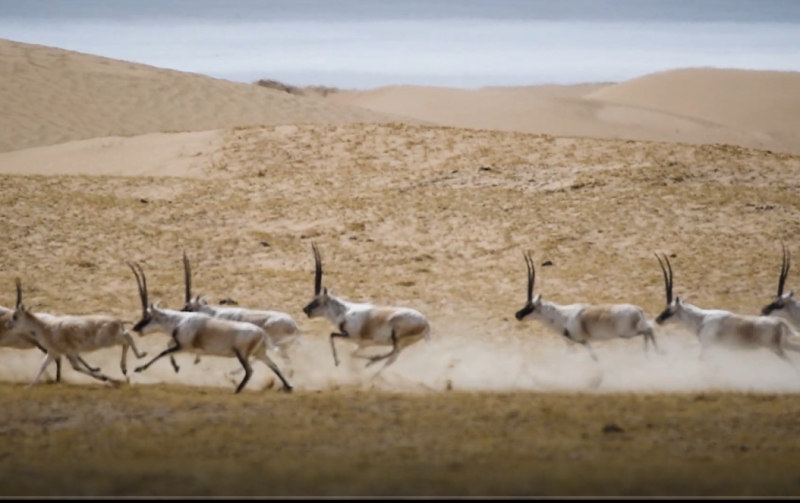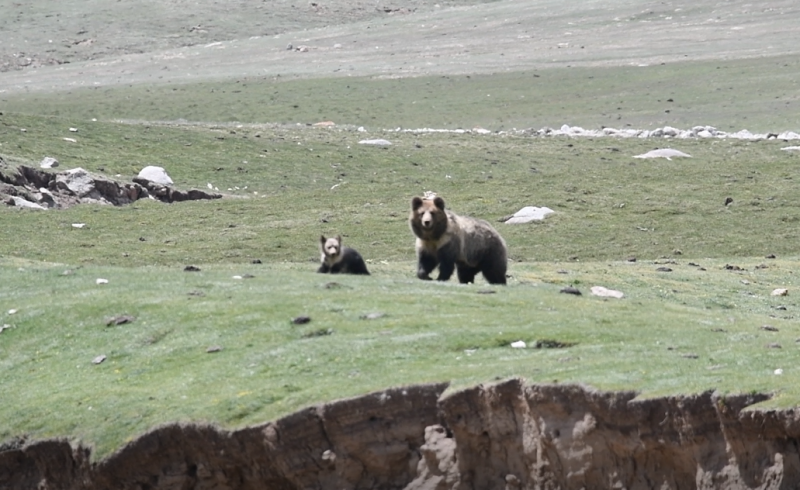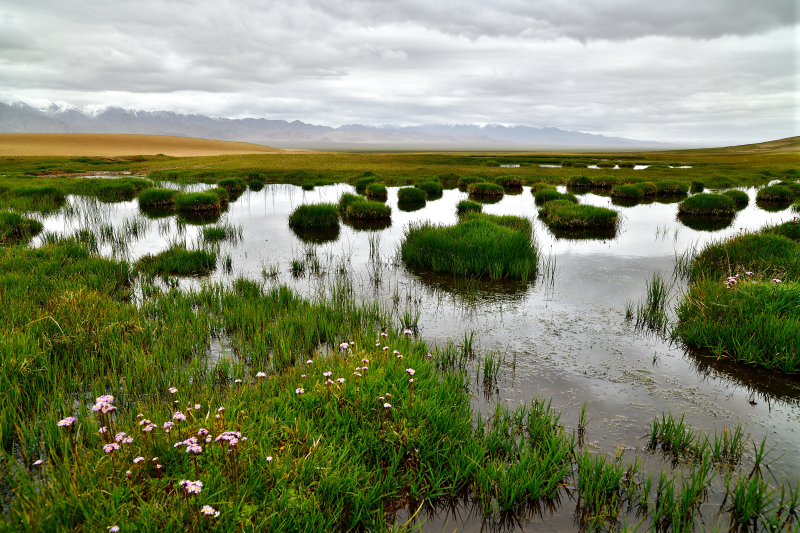
Photo taken in March, 2022 shows a flock of male Tibetan antelopes frisking. (Photo by Xu Junquan)
Shiliuyun-Xinjiang Daily news (Reporter: Zhao Mei): The reporter learned from the Administration of the Altun Mountain Nature Reserve that, entering into June, as the continuous rising of the temperature in the reserve, all kinds of rare wildlife are seen frequently.

Photo taken in the summer of 2021 shows a horse bear forages with her baby horse bear. (Photo by Xu Junquan)
According to Xu Junquan, deputy director of the plateau ecological environment and nature conservation lab of the reserve, during patrol, staff can often see flocks of Tibetan antelopes moving to the Tuzi Lake in the west of the reserve, starting their annual migration and lambing. “It is the season for Tibetan antelopes to migrate so as to give birth to their offspring, and it will end in late June to mid July, then they will return with their babies successively.”

Wild yaks like to inhabit in deep desert. (Photo by Wen Xinghua)
As the water grass turns green, the wetland with lush grass and the lakeside begin to be frequented by wild yaks and Tibetan wild ass. Recently, horse bears that have woken up from their hibernation are often seen by staff. They walk around with their cubs, sometimes ‘loot’ some foods from the management station.

Photo shows the summer scene of the Altun Mountain Nature Reserve, northwest China’s Xinjiang. (Photo by Gong Junsheng)
A week ago, the infrared camera installed in the reserve captured the image of rarely seen European badgers for many times, and black-necked crane couples who had finished their mating and started incubating in the grass by turns, waiting for the birth of new life.
“The frequent patrol of wildlife shows the improvement of the biological diversity, richness and integrity of the reserve,” said Xu Donghua, office director of the administration of the reserve.

Photo shows a baby horse bear rests on the ice of Xiaoshazi Lake in the Altun Mountain Nature Reserve, northwest China’s Xinjiang. (Photo by Li Jian)
Zhao Xudong, head of the publicity department of the administration of the reserve, said, at present, the varieties of the rare wildlife inhabiting in the reserve has reached 338, among which the kinds of the first-class protected animal in China has increased to 17 and the second-class to 31. The population of many important wildlife is steadily rising. The vegetation coverage of the reserve has also increased from 13.26% in 2000 to 17.04% in 2020, increasing by 3.78% in 20 years and the vegetation index by 25.4%.
(A written permission shall be obtained for reprinting, excerpting, copying and mirroring of the contents published on this website. Unauthorized aforementioned act shall be deemed an infringement, of which the actor will be held accountable under the law.)









